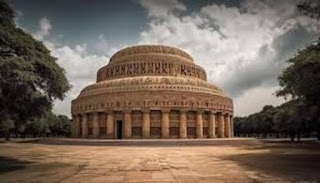Nestled amidst the serene landscapes
of Sikkim, the Bhutia Busty Monastery stands as a
testament to the rich cultural heritage and spiritual traditions of the region.
This notable religious institution has a captivating history that spans
centuries, reflecting the deep-rooted connection between the people of Sikkim
and the teachings of Tibetan Buddhism.
The origins of the Bhutia Busty
Monastery can be traced back to the late 19th century when Lama Lochen Tulku, a
renowned Buddhist scholar and practitioner, established the monastery.
Recognizing the spiritual significance of the site, Lama Lochen Tulku chose to
construct the monastery on a hilltop overlooking the picturesque town of
Gangtok, the capital of Sikkim. Bhutia Busty Monastery
traces its changes in location and structure due to unfortunate and tragic
incidents experienced by this monastery. This strategic location not only
allowed for the peaceful contemplation of the sacred teachings but also served
as a beacon of religious and cultural influence throughout the region.
The monastery's architectural style is
a harmonious blend of Tibetan and Sikkimese elements, showcasing the intricate
craftsmanship and attention to detail that are hallmarks of Himalayan Buddhist
art. The main temple, known as the Guru Lhakhang, is adorned with intricate
murals, colorful thangka paintings, and ornate sculptures, all of which serve
to create an immersive and meditative environment for the devotees.
The Bhutia Busty Monastery is home to
a diverse array of religious practices and rituals. Visitors can witness the
recitation of sacred texts, the performance of traditional masked dances, and
the intricate creation of sand mandalas, all of which are integral to the
Tibetan Buddhist tradition. Additionally, the monastery serves as a center for
the study and preservation of ancient Tibetan texts, ensuring that the wisdom
and knowledge of this rich cultural heritage are passed down to future
generations.
Today, the Bhutia Busty Monastery stands as a
symbol of Sikkim's deep connection to Tibetan Buddhism, offering a serene and
spiritual sanctuary for both devotees and curious travelers alike Its
rich history, coupled with its traditional practices and architectural
splendor, makes it a must-visit for anyone interested in Buddhism or seeking
tranquility amidst the Himalayan foothills.








